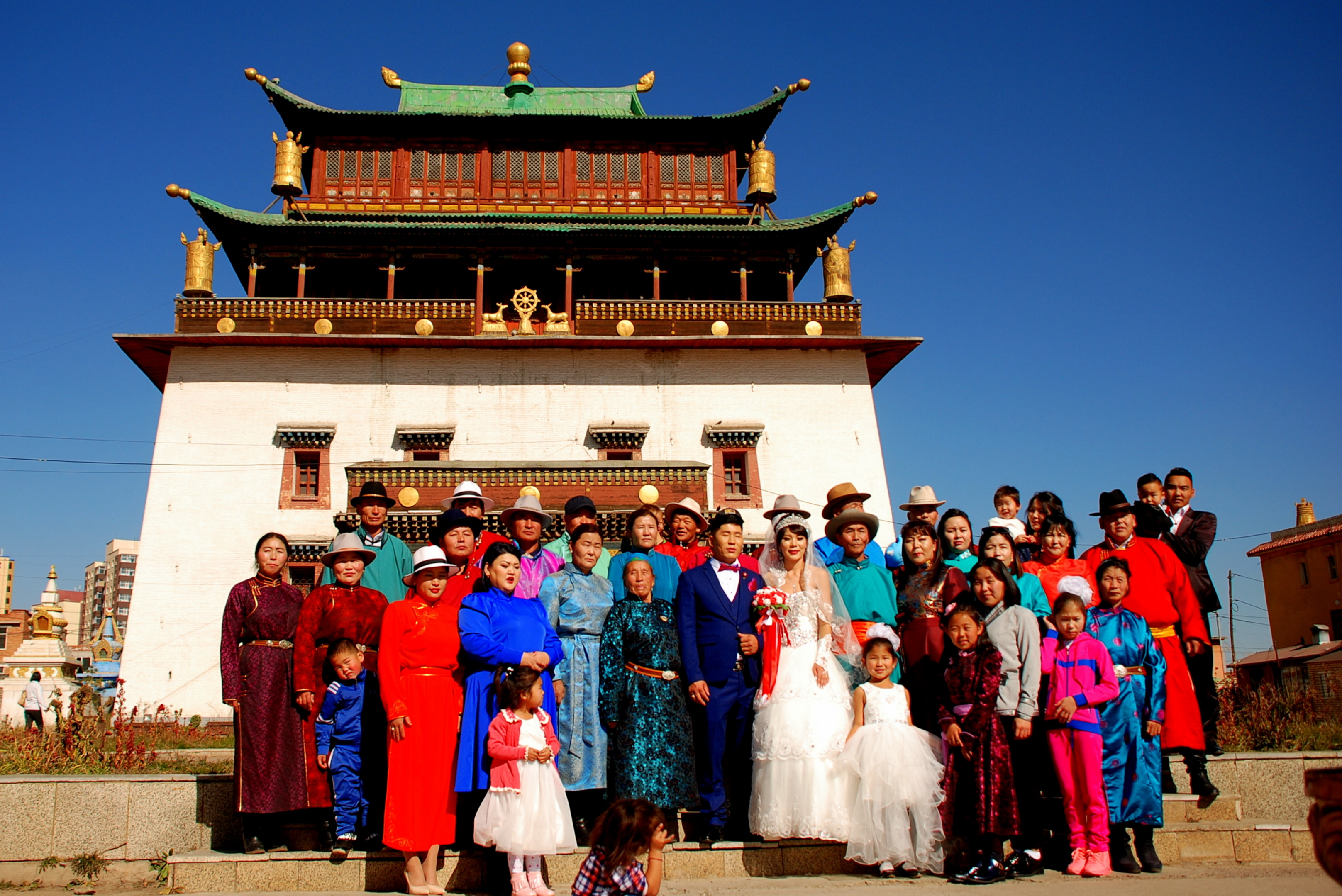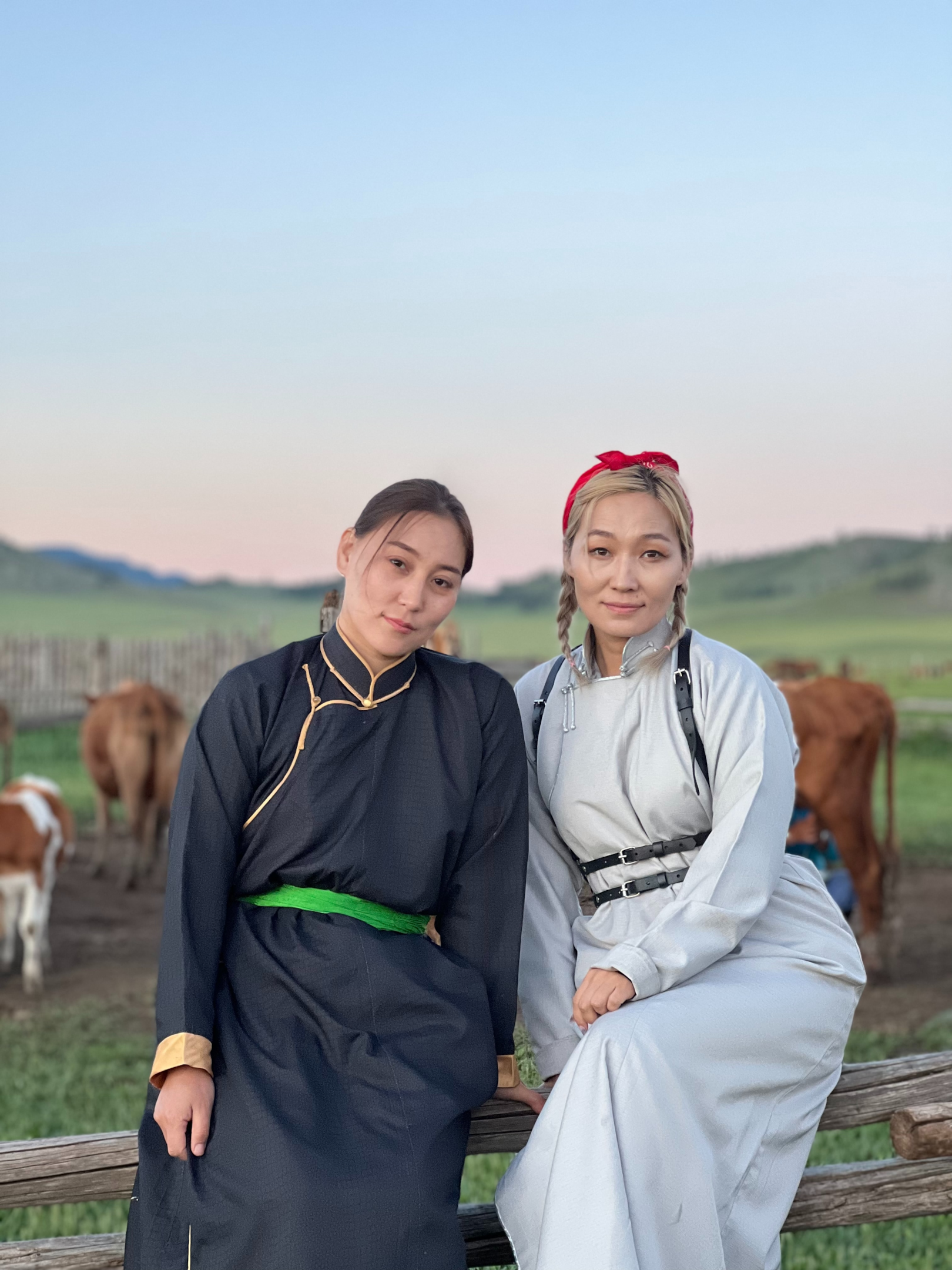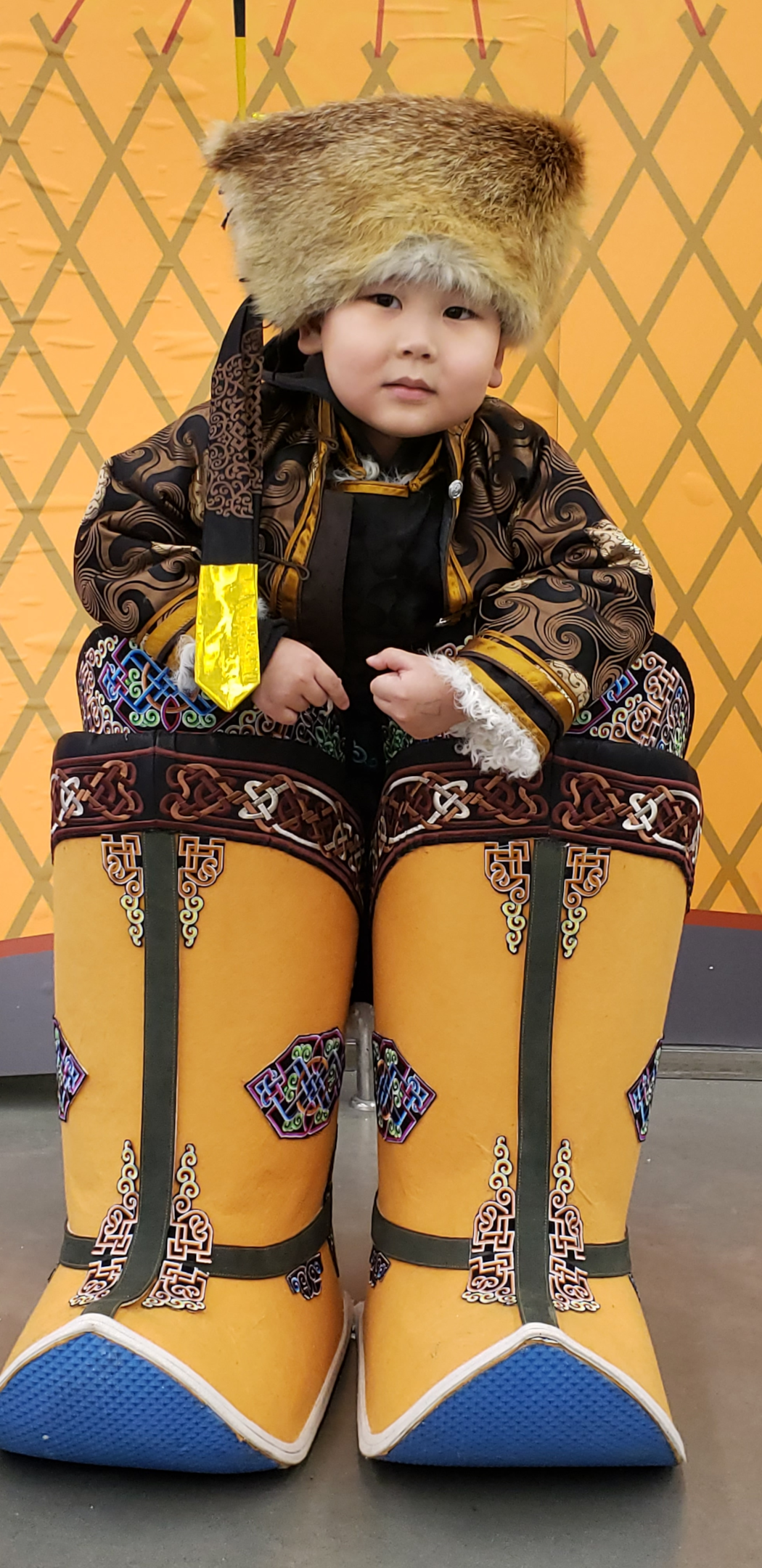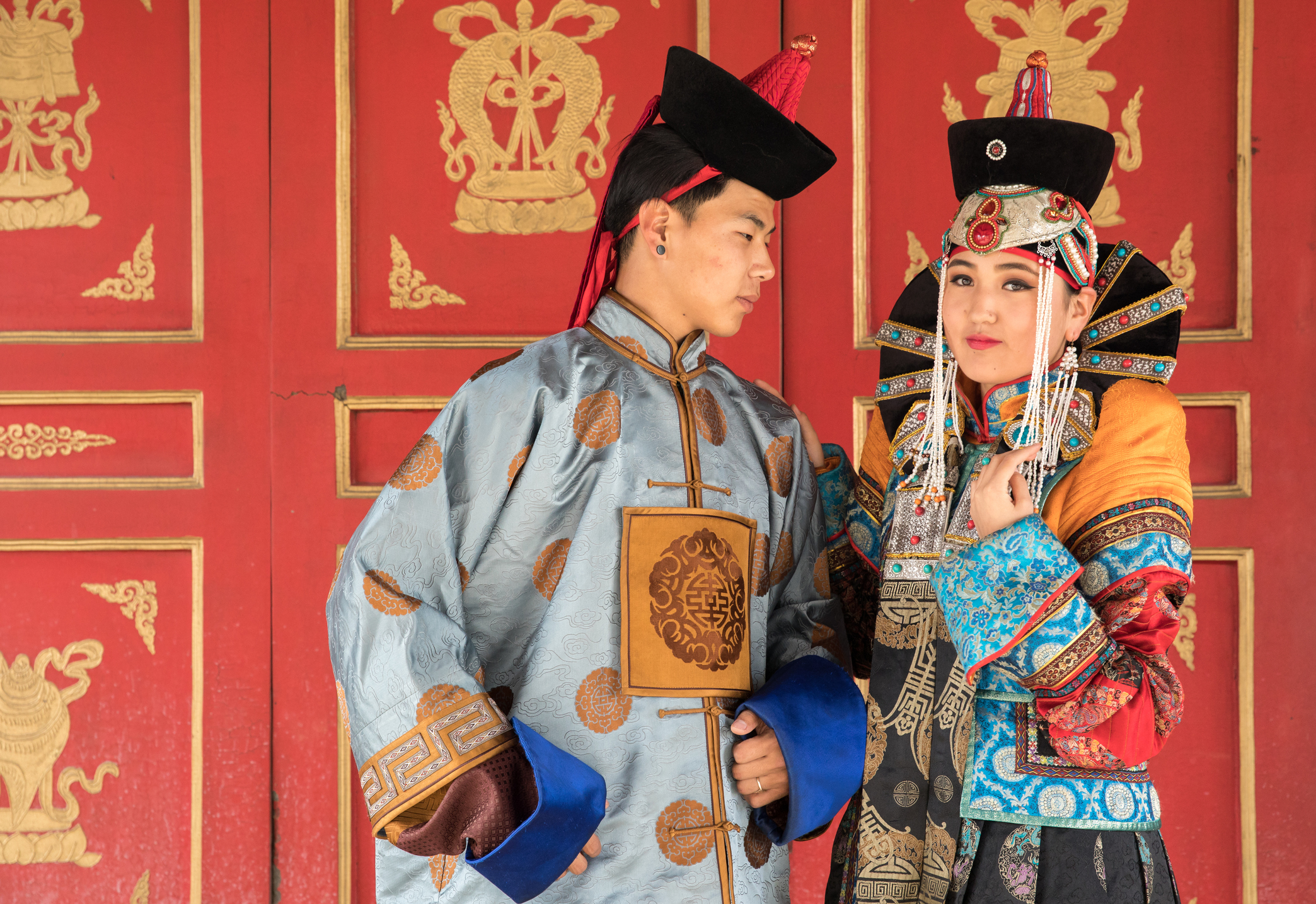Request A Car Rental
Travelling to Mongolia and need a car rental plus extra equipments?
The Timeless Beauty of Mongolian Traditional Clothes
Mongolian traditional clothing, or Mongolian traditional clothes, is a captivating fusion of practicality, symbolism, and artistry, reflecting the nation’s rich cultural heritage. As we delve into the timeless beauty of Mongolian attire, we will discover the versatility of the Deel, the art of hats, the functionality of boots, and the elegance of accessories. Let us embark on a journey to explore the history, significance, and evolution of this unique fashion culture.
Key Takeaways
- The Mongolian Deel is a versatile and symbolic garment worn by both men and women, reflecting regional affiliations, social standing and individual preferences.
- Traditional hats showcase the diversity of Mongolia’s culture while special occasion headdresses represent cultural heritage.
- Functional yet stylish Mongolian boots are symbols of national pride, with silver ornaments adding elegance to traditional attire which is celebrated in ceremonies & festivals.
The Mongolian Deel: A Versatile Garment

At the heart of Mongolian clothing lies the Deel, a traditional robe often made of leather, designed for horseback riding while providing warmth and protection from the elements. This versatile garment is worn by both men and women, with its components consisting of:
- a robe
- a hat
- a vest
- a belt
- boots
The Deel’s importance as a symbol of traditional and cultural identity is evident in its many different variations, reflecting the wearer’s social standing, regional affiliation, and individual preferences.
Beyond its function, the Deel also carries rich symbolism and meaning through design elements like color, patterns, and embroidery. These design features convey messages about the wearer’s tribe, marital status, and social standing, making it an essential part of the Mongolian traditional costume.
Seasonal Variations
Adapting to Mongolia’s challenging climate, the Deel features lighter materials for summer and fur-lined versions for the winter deel, providing comfort and protection to its wearers. Mongolian women often favor blue, green, and pink hues for their Deel, showcasing their personal style and preferences. A leather belt is often used to secure the Deel around the waist, adding both functionality and elegance to the garment.

Seasonal variations of the Deel cater to the comfort of Mongolian horsemen, ensuring ease of movement while traversing vast landscapes. This adaptability highlights the Deel’s versatility and its integral role in the daily lives of Mongols.
Symbolism and Meaning
Mongolian traditional clothing is imbued with symbolic meaning, and the Deel is no exception. Representing equality, the straightness and smoothness of the human body, the Deel is associated with the Mongolian saying, “The dress is God, The body is Evil,” highlighting the importance of the dress and its decorations being suited to the person wearing it.
Married Mongolian women, for example, have traditionally worn a sleeveless jacket over their long sleeves coats to signify their marital status. The Deel’s design variations, such as patterns and embroidery, further emphasize the wearer’s regional affiliations and social standing, showcasing the intricate symbolism and meaning behind this traditional garment.
The Art of Mongolian Hats
With over 400 different types, Mongolian hats, an integral part of traditional attire, illustrate the country’s cultural diversity and history. These hats, often worn with the Deel, are adorned with intricate designs and materials, reflecting the wearer’s social position and regional identity. Both men and women don traditional Mongolian hats, illustrating their importance in Central Asian fashion culture.
The art of Mongolian hat-making has evolved over time, with classic designs crafted from felt and fur, and modern interpretations incorporating contemporary materials and styles. Despite these changes, the significance of Mongolian hats remains evident in their continued popularity and influence on Mongolian fashion.
Traditional Hat Types

The loovuz, skullcap, and Buriad are among the traditional hat types, each uniquely designed and made from materials suitable for daily wear or special occasions. These hats showcase the diversity of Mongolian culture, with married women often wearing specific hat styles to signify their marital status. Traditional Mongolian hats are crafted from materials such as felt or leather, demonstrating the craftsmanship and skill of Mongolian hat-makers.
From the conical-shaped loovuz to the flat-topped Buriad, traditional Mongolian hat types reflect regional styles and preferences, offering a fascinating glimpse into the country’s rich cultural history.
Special Occasion Hats
Special occasion hats, such as those worn during Lunar New Year celebrations, feature intricate embroidery, vibrant colors, and symbolic elements. These hats are a testament to the artistry and cultural significance of Mongolian headwear, with elaborate designs and adornments that showcase the wearer’s wealth and social standing. Elite men and women, for example, set themselves apart by adorning their hats with peacock feathers.
From the traditional four-eared conical hat to the elaborate boqta headdress adorned with pearls and feathers, special occasion hats in Mongolia are a captivating display of the country’s cultural heritage and the role of headwear in traditional attire.
Functional and Stylish: Mongolian Boots

Known as Gutuls, Mongolian boots blend functionality and style. They are designed for horseback riding and protection from harsh elements, reflecting the cultural heritage and craftsmanship. The unique upturned toe design of these boots serves to facilitate the removal of the foot from stirrups in the event of a rider’s fall, while also providing a pocket of warmer air within the boot.
Traditional Mongolian boots are crafted from tough leather, with warm felt and fur-lined options available for winter wear. These boots are a testament to the skilled craftsmanship and rich cultural history of Mongolia, as they blend practicality with style and symbolism.
Materials and Construction
Mongolian boots are constructed with tough leather, warm felt, and upturned toes, with some models boasting fur coverings for additional warmth in winter. The leather used in their construction is typically thick and unbending, making the boots durable and well-suited for the harsh Mongolian climate. Some traditional boots also feature narrow strips of fabric or leather as decorative elements, adding a touch of elegance and style to their practical design.
The materials and construction of Mongolian boots showcase the ingenuity of Mongolian craftsmen, as they have tailored these boots specifically to suit the landscape and weather conditions of the country while retaining their cultural significance.
Cultural Significance
The continued popularity and usage of Mongolian boots in modern Mongolia and their presence in traditional ceremonies and festivals signify their cultural importance. The upturned toe design symbolizes the Mongolian philosophy of honoring and cherishing the environment, and the belief in not causing damage to nature.
Today, Mongolian boots are not only worn for their practicality but also as a symbol of cultural pride and connection to the nation’s heritage. As contemporary trends and styles continue to evolve, the enduring cultural significance of these traditional boots remains a testament to their timeless beauty and functionality.
Accessories: Adding Elegance to Mongolian Attire
Accessories, especially silver ornaments and jewelry, enhance Mongolian attire with elegance and personal expression, playing a crucial role in traditional dress. From belts and buckles to hairpins and earrings, these silver accessories showcase the wearer’s wealth and social standing, while also enhancing the beauty of the Deel and other traditional garments.
The craftsmanship and artistry of these accessories reflect the skills and cultural pride of Mongolian artisans, who continue to create intricate and beautiful adornments that enhance the traditional clothing. The use of silver, pearls, and other precious materials further underscores the importance of these accessories in Mongolian attire.
Silver Ornaments
Silver ornaments, such as belts, buckles, and hairpins, are commonly used in Mongolian clothing, showcasing the wearer’s wealth and social status. These accessories not only add elegance to the attire but also serve as a reminder of Mongolia’s rich cultural heritage and the importance of maintaining traditional elements in contemporary fashion.
From intricately crafted silver earrings adorned with pearls to ornate belt buckles and hairpins, these silver ornaments are a testament to the skill and artistry of Mongolian craftsmen. The enduring popularity of these accessories showcases their importance in Mongolian fashion, as they continue to be a treasured and symbolic part of the nation’s attire.
Jewelry and Adornments
Jewelry and adornments, including pearl head dressings, silver earrings, and coral necklaces, enhance the beauty of traditional Mongolian attire and reflect regional styles. These accessories not only add a touch of elegance to the clothing but also serve as a means of personal expression and cultural pride.
The use of pearls, corals, precious stones, and other precious materials in these adornments highlights the importance of jewelry in Mongolian attire, as well as the skill and artistry of the craftsmen who create them. As Mongolia’s fashion continues to evolve, these traditional adornments remain a cherished and symbolic part of the nation’s cultural heritage.
The Evolution of Mongolian Fashion
Over time, Mongolian fashion has adeptly evolved, weaving in ancient influences and contemporary trends while preserving a deep-rooted connection to cultural heritage. Some key features of Mongolian fashion include:
- The enduring popularity of the Deel, a traditional Mongolian garment
- Traditional hat styles that are still worn today
- The incorporation of silk, leather, and fur in clothing
Mongolian fashion, a part of the Central Asia cultural landscape and influenced by various ethnic groups, including mongol tribes, showcases a dynamic and evolving style.
Contemporary trends in Mongolian fashion blend traditional elements with modern styles, reflecting the country’s dynamic and evolving cultural landscape. As Mongolian fashion continues to adapt to global influences, it retains a strong connection to its cultural roots, making it a fascinating and unique aspect of world fashion culture.
Ancient Influences
Ancient influences on Mongolian fashion include the use of silk, leather, and fur, as well as the enduring popularity of the Deel and traditional hat styles. The combination of these materials and designs showcases the rich cultural history of Mongolia, with each element reflecting the nation’s heritage and the adaptability of its people.
From the luxurious silk robes worn by nobility to the practical leather and fur garments designed for warmth and protection, ancient influences on Mongolian fashion continue to shape contemporary trends and styles. These enduring elements serve as a testament to the resilience and creativity of the Mongolian people.
Contemporary Trends
Contemporary trends in Mongolian fashion blend traditional elements with modern styles, reflecting the country’s dynamic and evolving cultural landscape. As Mongolian society continues to progress, traditional garments like the Deel and hat styles are adapted to suit modern tastes and preferences, incorporating global influences while maintaining a connection to cultural heritage.
Innovative designers and artisans are reimagining Mongolian fashion by:
- Incorporating traditional designs into modern silhouettes
- Utilizing traditional fabrics in modern cuts
- Combining traditional colors and patterns with contemporary styling
This fusion of old and new showcases the versatility and creativity of Mongolian fashion, capturing the essence of the nation’s rich cultural history while embracing the future.
Dressing for the Occasion: Mongolian Clothing in Ceremonies and Festivals

In ceremonies and festivals, Mongolian clothing takes center stage to exhibit the country’s rich cultural heritage and nurture national pride. From Lunar New Year celebrations to the National Costume Festival, traditional Mongolian attire, including the vibrant and meaningful Mongolian costume, serves as an expression of the nation’s identity. A typical mongolian traditional costume consists of various elements that showcase the unique cultural aspects of the country.
As participants don their finest Deels, hats, and accessories, these events offer a captivating display of the beauty and diversity of Mongolian traditional clothing. From intricate embroidery and vibrant colors to symbolic patterns and designs, Mongolian attire is a testament to the nation’s enduring connection to its cultural roots and the importance of preserving this heritage for future generations.
Lunar New Year Celebrations
Lunar New Year celebrations feature traditional Mongolian attire, with participants donning their finest Deels, hats, and accessories to mark the occasion. The emphasis on white clothing during these festivities symbolizes purity and a desire for a new beginning in the coming year. Women often adorn themselves with pearl head dressings and silver earrings with pearls, adding a touch of elegance and sophistication to their attire.
As families and friends gather to celebrate the Lunar New Year, the traditional clothes, especially Mongolian clothing, that people wear serves as a reminder of the nation’s rich cultural heritage and the importance of maintaining these traditions in a rapidly changing world.
National Costume Festival
The National Costume Festival highlights the diversity and beauty of Mongolian traditional clothing, with events such as parades, fashion shows, and cultural exhibitions. Participants showcase their regional styles and craftsmanship, wearing Deels, hats, and accessories that reflect their unique cultural heritage.
As attendees explore exhibitions like the Naadam Ger, Traditional Costume Making Ger, and Ethnic Cultural Ger, the National Costume Festival offers a fascinating glimpse into the history and significance of Mongolian attire. This event not only celebrates the beauty and diversity of Mongolian traditional clothing but also fosters a sense of national pride and unity in the face of global influences.
Where to buy Traditional Mongolian Clothes in Ulaanbaatar
In Ulaanbaatar, shops and markets offer a broad selection of traditional Mongolian clothes, including:
- Deels
- Hats
- Boots
- Accessories
These shops cater to both locals and tourists. From the Gobi Cashmere Factory store and the State Department Store to the Narantuul Market and the NOMAD HOUSE Souvenir Shop, visitors can find a variety of traditional garments to suit their tastes and preferences.
In addition to brick-and-mortar stores, online platforms such as eBay offer a selection of genuine Mongolian attire for those who wish to purchase traditional clothing from the comfort of their own homes. As interest in Mongolian fashion continues to grow, the availability of traditional garments both in Ulaanbaatar and online ensures that this unique fashion culture remains accessible to a global audience.
Summary
In conclusion, the timeless beauty of Mongolian traditional clothing lies in its unique blend of practicality, symbolism, and artistry. As we have explored the versatility of the Deel, the art of hats, the functionality of boots, and the elegance of accessories, it becomes clear that Mongolian fashion is a captivating reflection of the nation’s rich cultural heritage. As contemporary trends and global influences continue to shape the future of fashion, the enduring appeal of Mongolian attire serves as a testament to the resilience and creativity of its people.
Frequently Asked Questions
What is traditional Mongolian clothing called?
Split text: Paragraph 1: Traditional Mongolian clothing is called Del, a long, caftan-like garment traditionally worn with a sash, belt, hat and boots. Both men and women wear it, with women often using silkier material and different colors like blue, green and pink. Paragraph 2: In colder regions, the del can be lined with fur for extra warmth.
What is deel Mongolian clothing?
The Deel is a traditional Mongolian cloak, consisting of a caftan-like long garment, sash, belt, hat and boots. The buttons are often made from decorative stones or silver, while the shoe is worn by both men and women, but men add a sash of contrasting colour around the waist. It is traditionally written in vertical lines Top-Down, right across the page.
What is Mongolian clothing made out of?
Mongolian clothing is typically made from silk, cotton and fur, often adorned with copper or silver ornaments. Sheep wool and fox pelts are also used to make traditional winter deels.
How did the Mongols dress themselves?
The Mongols typically wore animal skins, rounded fur hats and long clothes to protect themselves from the harsh climate of the Asian steppe. Genghis Khan also disagreed with the tradition of measuring a man by worth and position.
What is the cultural significance of Mongolian boots?
Mongolian boots have long been an important part of Mongolian culture, both as a symbol of traditional style and a beloved item used in ceremonies and festivals.
Request A Car Rental
Travelling to Mongolia and need a car rental plus extra equipments?






